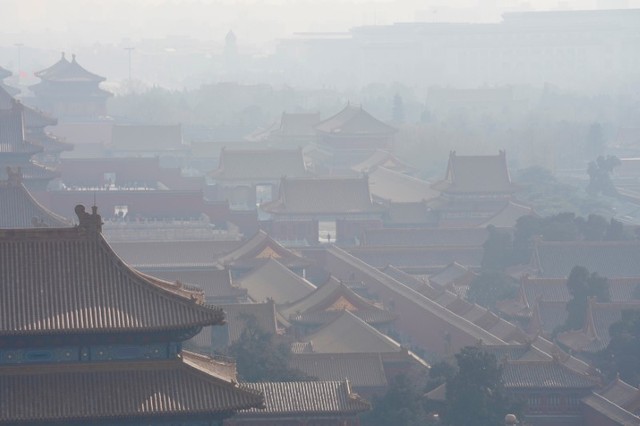Dark side of industrialized and urban China: Deadly ozone, ineffective waste management
Rapid urbanization combined with rapid economic growth came at a heavy toll on the environment. Concentrations of lung-damaging ozone hit a record high in China.

- Country:
- China
Since the opening-up and reform policies started in 1978, the achievements and positive impacts of industrialization and urbanization in China have been remarkable. China's reform and opening-up policies, as well as its rapid economic growth, have lifted millions out of poverty and created wealth and an urban middle class.
The urbanization ratio increased from 19.4 percent in 1978 to 58.5 percent in 2017. Rural-urban migration is expected to continue resulting in a projected urban population of 816 million by 2020, and more than 1 billion by 2030.
However, rapid urbanization combined with rapid economic growth came at a heavy toll on the environment. Concentrations of lung-damaging ozone hit a record high in China in June this year, rising 11 percent from the same month last year, environment group Greenpeace said in July this year, citing official data.
Ground-level ozone, also known as "sunburn for the lungs", is caused by the interaction of sunlight with nitrogen dioxide and volatile organic chemicals (VOCs).
It can lead to shortness of breath, coughing and inflamed airways, according to the US Environmental Protection Agency. Children are at the greatest risk and prolonged exposure may cause asthma and abnormal lung development.
Citing figures from the Global Burden of Disease database, Greenpeace said ozone exposure was responsible for about 70,000 premature deaths in China in 2016.
Increased urbanization and wealth also leads to an increase in consumption levels and associated generation of solid waste.
Municipal solid waste generation increases disproportionately faster than urban population growth. Although the 3R principle of 'reduce, reuse, and recycle' is a commonly agreed objective for waste management, ADB says there is still lack of awareness by the general public and a lack in effective solid waste management systems including collection, segregation, and final disposal system.
Illegal dumping in public areas such as streets, plazas, parks, riverbanks, lakes, open fields, and forests remains to be a key concern of cities, towns, villages, and surrounding areas.
This causes numerous problems that jeopardize public and environmental health such as pests, polluted environments, degradation of river and lake ecology, and clogged-up drainage systems.
Integrated, efficient, and sustainable municipal solid waste management, including adequate final disposal either in sanitary landfill sites or in municipal waste incineration plants is critical in the new China.
(With inputs from Reuters and ADB)
- FIRST PUBLISHED IN:
- Devdiscourse News Desk
ALSO READ
US raises commercial and market access issues with China in meeting
US, Philippines, Japan to tackle South China Sea incidents in trilateral summit, says Manila official
US Treasury Secretary Yellen meets foreign business leaders in China ahead of trade talks
US, Philippines, Japan to tackle South China Sea incidents in trilateral summit, says Manila official
US, Philippines, Japan to tackle South China Sea row in summit










